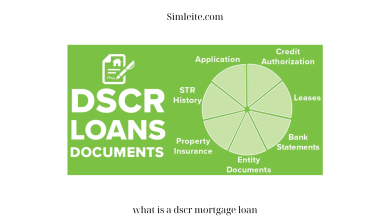What is a 3/1 ARM Mortgage Rate: Understanding the Basics
Are you considering a 3/1 ARM mortgage rate but unsure of what it entails? In this article, we will delve into the details of this type of mortgage rate and explore its advantages and disadvantages. By the end, you’ll have a clear understanding of whether a 3/1 ARM mortgage rate is the right choice for you. Let’s dive in!
Understanding the 3/1 ARM Mortgage Rate
A 3/1 ARM mortgage rate, also known as a 3-year adjustable-rate mortgage, is a loan with an initial fixed interest rate for the first three years. After this period, the rate adjusts annually based on market conditions and predetermined factors. It’s important to grasp the structure of this mortgage rate to make an informed decision regarding your financial future.
During the initial fixed-rate period, you can benefit from lower interest rates compared to traditional fixed-rate mortgages. This feature can be particularly appealing if you plan to sell or refinance your home within the first few years. However, it’s crucial to note that after the initial term, the rate may increase, potentially resulting in higher monthly payments.
Pros and Cons of a 3/1 ARM Mortgage Rate
Advantages
-
Lower Initial Rates: The initial fixed-rate period of a 3/1 ARM mortgage rate often offers lower interest rates compared to fixed-rate mortgages. This means you can enjoy more affordable monthly payments during the first three years.
-
Potential Savings: If you plan to sell or refinance your home within the initial fixed-rate period, you can take advantage of the lower rates without being affected by future rate increases. This can potentially save you money in the short term.
Disadvantages
-
Rate Adjustments: Once the initial fixed-rate period ends, the interest rate on a 3/1 ARM mortgage rate can adjust annually. This adjustment is based on market conditions, which means your monthly payments may increase if rates rise. This uncertainty can make budgeting more challenging.
-
Future Rate Increases: While the initial fixed-rate period offers lower rates, it’s important to consider the potential for rate increases in the future. If rates rise significantly after the initial term, your monthly payments could become unaffordable.
Factors Affecting 3/1 ARM Mortgage Rates
Several factors influence the rates for a 3/1 ARM mortgage. Understanding these factors can help you make an informed decision when considering this type of mortgage rate. Let’s explore them:
-
Economic Indicators: Economic factors, such as inflation rates, economic growth, and monetary policies set by the Federal Reserve, can impact mortgage rates. Keeping an eye on these indicators can give you insights into potential rate changes.
-
Lender Policies: Each lender may have different policies and guidelines for adjusting rates on a 3/1 ARM mortgage. It’s essential to compare lenders and understand their rate adjustment mechanisms before making a decision.
-
Borrower Qualifications: Your credit score, income stability, and debt-to-income ratio can affect the interest rate you qualify for. Lenders assess these factors to determine your creditworthiness and loan terms.
Frequently Asked Questions (FAQs) about 3/1 ARM Mortgage Rates
-
How often does the interest rate adjust in a 3/1 ARM mortgage?
- With a 3/1 ARM mortgage, the interest rate adjusts annually after the initial three-year fixed-rate period.
-
What happens after the initial 3-year period in a 3/1 ARM mortgage?
- After the initial three years, the interest rate will adjust annually based on market conditions and predetermined factors.
-
Can I refinance my 3/1 ARM mortgage?
- Yes, refinancing is an option with a 3/1 ARM mortgage. It allows you to secure a new loan with different terms, potentially extending the fixed-rate period or transitioning to a different mortgage type.
Conclusion
In conclusion, a 3/1 ARM mortgage rate can be an attractive option for those who plan to sell or refinance their homes within the initial fixed-rate period. It offers lower rates in the short term, providing potential savings. However, it’s important to consider the potential for rate increases after the initial term and assess your long-term financial goals.
Remember, understanding the factors that affect 3/1 ARM mortgage rates, such as economic indicators and lender policies, is crucial for making an informed decision. By assessing your personal financial situation and considering the advantages and disadvantages, you can determine whether a 3/1 ARM mortgage rate aligns with your needs and aspirations.
